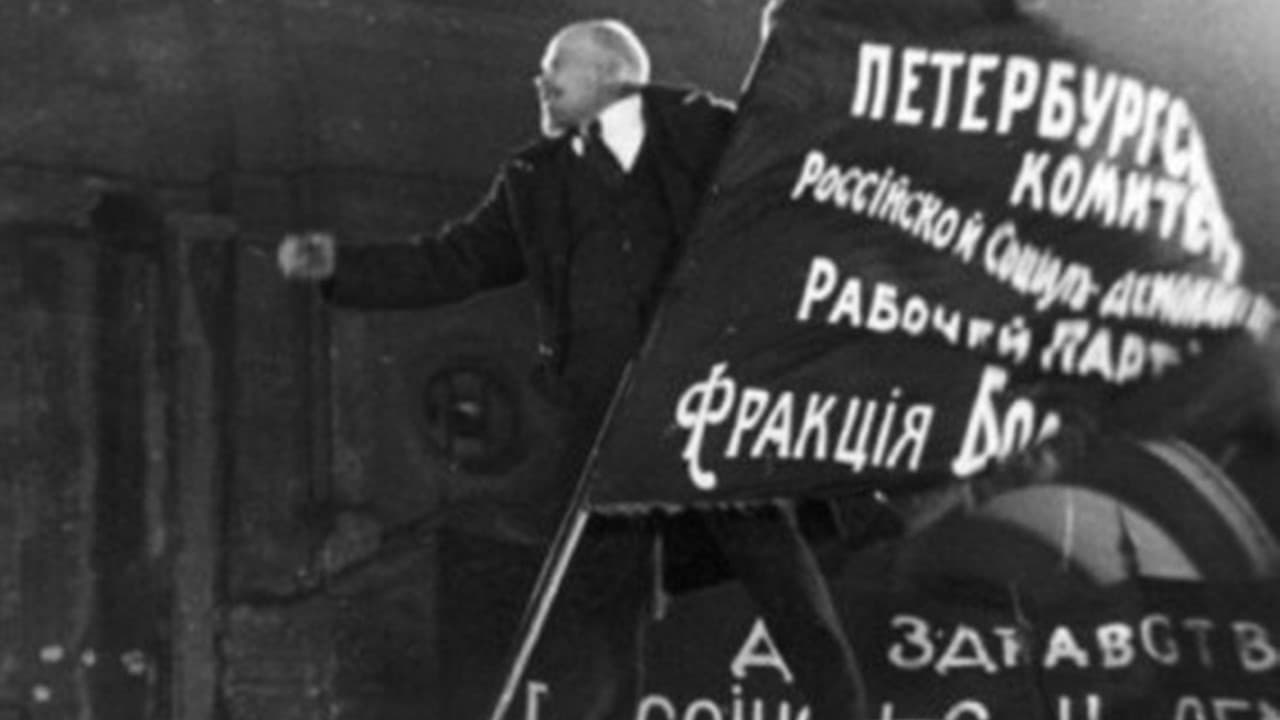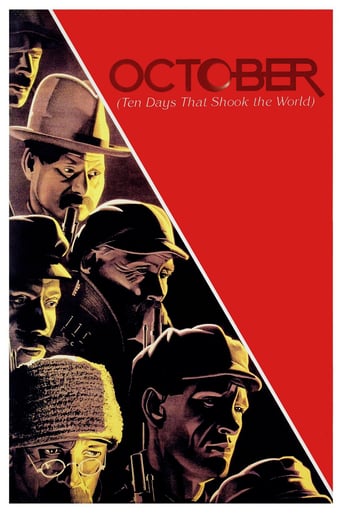Breakinger
A Brilliant Conflict
SpunkySelfTwitter
It’s an especially fun movie from a director and cast who are clearly having a good time allowing themselves to let loose.
Billy Ollie
Through painfully honest and emotional moments, the movie becomes irresistibly relatable
zif ofoz
Even though this masterpiece was created in 1928 it will completely blow you away in today's high tech computer graphic world! Even if you do not care for the story Directors: Grigori Aleksandrov and Sergei M. Eisenstein have created a photographic dream, almost surreal silent imagery, that will have your eyes locked to the screen.If you want a more studious look into the background of this historical movie there are other writers here in the review section that have written wonderful reviews of this move. But if you want to feel the emotion, the peasants frustration, the activist anger, the boredom of the lazy uncaring ruling class, then please watch and absorb this wonderful movie.It is a privileged to see this film and thank goodness it has been preserved as so many films from the early 20th Century have deteriorated or are completely lost.
Robert J. Maxwell
This story of the October Revolution in 1917 Russia really moves along. It's never boring. The images are innovative enough to be startling at times.Here we are introduced to Kerenskiy, head of the provisional government that took over after the, er, downfall of Tsar Nicholas. Actually, I gather that, as in most cases of revolution, everything was confused and there were actually a series of mutinies, protests, violent demonstrations, and all the rest of that sad lot until the Bolsheviks finally won and established a communist state.What a visual pageant! We first see Kerenskiy, who is one of the villains of the piece, in close up, his face lowered, wearing the sinister grin of an alligator. Then, BANG, and he and his cronies are intercut with shots of a bronze peacock, jerkily lifting its head, looking around, and spreading the feathers of his magnificent tail. We get the picture, so to speak. If we don't -- not to worry. Eisenstein a bit later gives us a shot of Kerenskiy standing with his arms folded, a frown on his features. Then a cut to a statue of Napoleon in exactly the same pose.Do we have any doubt about a particular general? The doubt is resolved when we witness an ornate statue of the former emperor, once torn apart, now being reassembled by running the film backward so that, piece by piece, the hated Tsar turns whole again.At about the half-way mark a fuse blew in my brain and I was overcome by bafflement. I lost track of who was who because I don't know enough about the Russian revolutions. Figures blended into one another. Red Russians and White Russian morphed into Pink Russians. "TURNCOATS!" screams the title card. Turncoats against whom or against what? Here comes General Kirinov on his white steed. Should I applaud or boo? I know I'm supposed to be doing one thing or the other because, besides being a treat for the eyes -- man, is this propaganda. I suppose it ends with the victory of the Bolsheviks and the establishment of a communist state based on the theories of Karl Marx, who never visited Russia himself. I wonder if the audience of 1928 would have cheered as loudly if they could have foreseen the years under Stalin, who may have been responsible for more Russian deaths, pointless deaths, than Hitler?
Teodor Georgiev
October is a masterfully done film, covering the history of the October Revolution. While it is still technically a silent film, its sound track attempts to sync up with the events on the screen, adding gunshots and yells where appropriate. In that sense, the film is not too different from modern day action movies, provided the audience can ignore the black/white. It is definitely much more advanced than the Dying Swan and Man With A Movie Camera. The actual film itself is a fascinating piece of history, as the title suggests. It was funded by the Soviet government in honor of the 10th anniversary of the 1917 October Revolution. That said, one can gripe about historical accuracy. The ruling class is often portrayed as completely corrupt and sluggish, while the revolutionaries as noble and just. Statues reassemble themselves and soldiers fighting for the "evil" side join the revolutionaries with pride and are welcomed with open arms. Despite this, it does show the revolution as it was portrayed to the Soviet public at the time. The scene of Lenin leading the revolutionaries has in fact become how most people imagine the moment to have happened. An interesting note is that the film did not enjoy commercial success during its time but has gone on to become a symbol of both Eisenstein's ability and the bringing of a historical epic to cinema. Since then however, it has been accepted as one of the best films of the time period. Looking at it now, I can't see why it ever wasn't viewed as a masterpiece.
cutsman-2
October by Sergei Eisenstein is one of the first films in the Russian Montage movement but neither as good nor memorable as his other Russian propaganda film, Battleship Potempkin. It shows in a sort of stylish documentary style way, the fall of the monarchy and the rise of the Bolsheviks. It is a really interesting movie to watch, mainly because it is 80 year old propaganda, but also because it is something that Americans probably don't look back fondly at. But this is painted in such a light that it is easy to support the cause, to cheer on the Bolsheviks as they raid the castle and kill those that stand in their way. The performances from the lead are all good or I guess so, it's a bit hard to gauge, as most of the extras were people actually there. Are they acting or merely just being themselves? Anyway, the movie looks beautiful and can be enjoyed on a surface level.The problem with the film is that it would be difficult to take it in on a much deeper than surface level. A lot of the famed montage shots, where you show one thing and then another quickly as if they are related, are too specific to the time I was completely lost on nearly all the references. Also the film doesn't do the best job introducing characters as if the film was made almost entirely for a set of people that will cheer when an unnamed character is shown because they get the reference. Which I'm not sure is a fault, was Eisenstein even thinking this film would be distributed, or even still available 80 years later? October isn't the best Russian propaganda film, but I'm sure it isn't the worst. It is likely best viewed by the huge cinephiles that are studying film movements.

